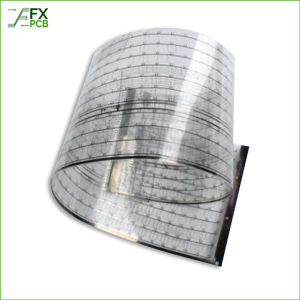
With the advent of increasingly intricate and compact electronic devices, the demand for sophisticated soldering materials for Printed Circuit Board Assembly (PCBA) has skyrocketed. The extensive miniaturization of electronic devices necessitates soldering materials that can withstand the challenges of PCB assembly while ensuring robust performance, longevity, and overall device integrity. This article delves into the fascinating realm of advanced soldering materials and their impact on the evolving landscape of PCBA.
Traditionally, soldering has relied on alloys like tin-lead. The industry has switched towards lead-free alternatives due to the necessity to comply with environmental requirements, particularly the Restriction of Hazardous Substances (RoHS) directive. The most widely accepted alternative today is the tin-silver-copper (SAC) alloy. Yet, as device dimensions shrink and complexity escalates, the search for more efficient materials is relentless.

As a fast turnaround or quick-turn PCB Assembly Manufacturer /factory in Shenzhen China, FX PCB is able to fulfill orders in a fast delivery time with our modern technologies used in production.
Our factory carries out the assembly and installation of printed circuit boards to order. During the development and manufacturing process, constant quality control is carried out.
We strictly follow your Gerber file and Bom list for your fast turnaround or quick turn PCBA projects, and we will also be glad to suggest you the alternative for your passive components to decrease your cost, but all replacement components need you to approve and make the final decision on whether you want to use them.
Innovations in the sphere of soldering materials have given birth to a number of promising substances designed to answer the emerging challenges of PCBA. Two particularly intriguing advancements are nano-solders and composite solders.
Nano-solders are a new breed of soldering materials that contain nanoparticles. These nanoparticles dramatically modify the microstructural characteristics of the solder joint, resulting in improved mechanical properties, better wetting characteristics, and lower melting temperatures.
A comprehensive study of nano-solders involves observing the interactions at a microscopic level. This knowledge is vital for understanding their behavior during the soldering process and subsequently their performance in PCB assemblies. For instance, the addition of ceramic nanoparticles to a solder matrix can improve its resistance to electromigration – a critical problem in high-density PCBs.
Composite solders are another revolutionary development in the PCBA industry. They consist of traditional solder alloys, such as SAC, combined with other materials (usually in particulate form) to enhance certain properties. For example, the addition of nickel particles to a SAC solder can significantly improve the solder’s shear strength.
Composite solders bring forth the possibility of tailoring solder properties to match specific PCBA requirements. This adaptability makes them a promising option for high-performance applications, including aerospace and medical devices.
For applications where reliability under extreme conditions is a must, such as aerospace, automotive, or military electronics, high-reliability alloys have been developed. These include the tin-antimony (SnSb) and tin-bismuth-silver (SnBiAg) alloys. The latter is a low melting point alloy, particularly suitable for delicate, heat-sensitive components.
The demand for low-temperature alloys, which can solder at decreased temperatures to protect heat-sensitive components, has grown in tandem with the miniaturization of electronic equipment. Tin-bismuth (SnBi) alloys, for instance, have gained popularity due to their lower melting point compared to traditional SAC alloys.
Indium alloys are another category of advanced soldering materials that offer unique properties. Indium-based solders have excellent thermal and electrical conductivity and are particularly useful when the solder joint needs to be a good conductor. Moreover, they can resist thermal fatigue better than many other solders, making them a top choice for high-temperature applications.
Micro-alloyed solders are those that incorporate a small amount of a distinct element to the base alloy to improve its properties. This category includes the likes of doped SAC alloys, where trace elements like manganese or nickel are added to the SAC base. These elements improve the drop-shock resistance and can also mitigate the occurrence of tin whiskers.
One of the rising stars of the advanced soldering materials sector is the bismuth-silver (BiAg) alloy system. This system is receiving much attention as an alternative to high-lead soldering alloys, which are exempt from RoHS but still pose an environmental hazard. BiAg alloys exhibit high thermal and electrical conductivity, good wettability, and high shear strength. They offer a greener, yet high-performing option for soldering applications demanding superior mechanical and thermal reliability.

A significant element to consider is the solder’s melting temperature. The working environment’s thermal conditions should align with the solder’s melting point to avoid premature failure. Another vital aspect is the material’s mechanical properties. A PCB in a high-vibration environment, for instance, needs a solder with high shear strength to ensure the joints remain secure.
Despite the dazzling prospects offered by these advanced materials, there remains an elephant in the room – sustainability. The electronics industry, including PCBA, must grapple with the environmental implications of their processes and products. Thus, finding sustainable soldering materials is as crucial as improving performance metrics.
For instance, the incorporation of recycled materials into solders is an emerging trend. Some companies are exploring the potential of using recycled tin and other metals in solder alloys to reduce the environmental impact.
The future of PCB Assembly, with advanced soldering materials, paints a vivid picture. The integration of nano and composite solders promises not only better device performance but also greater customization, fitting the specific needs of various applications.
Further, the ongoing research and development in this field open doors to a world of potential. PCBA could see breakthroughs in reliability, miniaturization, and sustainability, all thanks to these cutting-edge soldering materials.
PCBA has come a long way from its humble beginnings, with soldering technology integral to this journey. As we stand on the precipice of a new era, advanced soldering materials hold the promise of propelling PCBA into an exciting future filled with endless possibilities.
While the challenges are significant, the potential rewards are greater. As we continue to explore these materials, we can expect to see a profound impact on the PCBA industry. Here’s to the future of PCBA and the soldering materials that will lead us there!
As we look toward the future of PCBA with advanced soldering materials, it’s clear that the path forward requires innovation, expertise, and dedication to excellence. And who better to navigate that path than FX PCB?
At FX PCB, we are leading the way in incorporating these advanced soldering materials into our PCB assembly process. We understand the nuances of these cutting-edge materials and how to harness their unique properties for optimal performance.

I am Peter Gong. I have been working in PCB and PCBA industry for 15+ years now. I have been a part of the PCB revolution with my dedication to circuit board technologies and creative ideas. I write in FX PCB to impart my knowledge on PCB and PCBA for all circuit board lovers, manufacturers, and users.
WhatsApp us